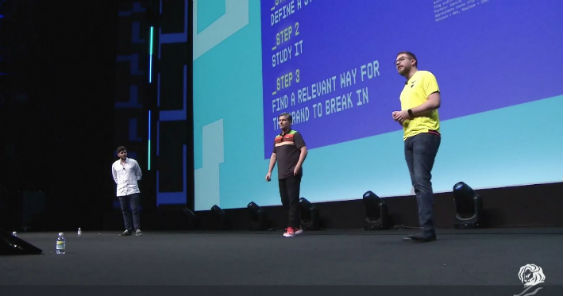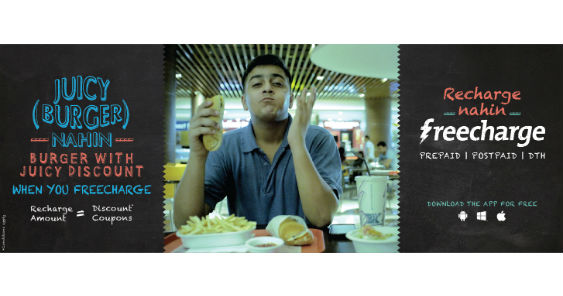by Theda Braddock
One of the most buzzed about talks at Cannes this year was the story about Burger King’s stand-out approach to hackvertising. The brand and its agencies own the game and that’s in large part due to their understanding of hacking itself. Juan Pavier Peña and Ricardo Casal, both ECDs at David Miami and self-described tech nerds, like to study how and why hackers do what they do, and bring their observations into advertising. By decoding what they do, Peña says, the agency takes the steps and framework hackers follow and uses them to hack pop culture, with an advertising approach.
Together with CMO Fernando Machado, the agency directors detailed their 5-step approach to hackvertising and how they’ve amassed 30 billion impressions and $400 million in earned media in the last 4 years.
Step one – Define a system to hack, what hackers call ‘eavesdropping’. Monitoring systems can tell you how they work and how buzzworthy something is, so when it comes to advertising, take a look at social media, reddit, YouTube, late night talk shows – anywhere things are happening fast, the agency advises.
Sometimes people aren’t talking about what you think. Using Trendmap.com last year, the agency discovered most people weren’t chatting about the new Star Wars movie. Instead, the conversation was focused on net neutrality, a hot-button political issue facing a congressional vote in the U.S. at the time. Why? Everyone was looking it up, trying to find out what it was. Burger King saw an opportunity to step in the game by explaining the tricky subject to consumers. In a special operation, stores across the country set prices in relation to the amount of time customers wanted their sandwich prepared in, likening it to the issue of internet speed regulation. The campaign became so big it was cited in congressional testimony and earned them invitations to the White House where the administration offered to correct their understanding of the subject. They broke into the mainstream conversation and politics, and even managed to tick off the president, a win on all accounts. Similarly, when Burger King hacked theaters in Germany by screening a message to ‘never trust clowns’ after trailers for the movie ‘It’, a playful dis on McDonald’s, it proved how relevant hacking can be effective.
Make sure you study the conversation and, ECD Ricardo Casal points out, know how to get in and get out, and how to bend the rules, like when the brand hacked social media with a campaign that got into a conversation by getting around regulations. Though breast cancer is a major health concern worldwide, Facebook, Instagram and other social media censor images of naked female breasts even if the post might be relevant to the disease. In order to promote awareness and depict the proper technique for self-breast exams, Burger King took the rules and bended them. They were able to illustrate how to do a breast exam by filming a demonstration on an overweight man’s manboobs, which don’t fall under censor regulations. Efficient, educational and legal.
Another example came from Peru where a law pass passed allowing the public to bring outside food into movie theaters, but with a catch – the food had to resemble what was sold at theaters’ concession stands. Realizing their mall locations were in close proximity to many cinemas, Burger King created the ‘King Popcorn’, a trick bag of popcorn that hid your whopper and fries. The operation was shut down but not after a massive boost to sales.
Regulations go hand in hand with law and brands should check with lawyers. Not just to verify the legality of certain ideas, but because lawyers can also draw from their own creative talent to help campaigns come alive, and prevent their orchestrators from facing jail time. The McMansions campaign that gained so much buzz for its photos of flame grills in the backyard of McDonald’s executives was ambitious, but the panel assured, they were careful not to break the law by selecting publicly available photos.
The last step is to deploy the attack… and disrupt. At this point, Peña insists, you need to be ready for anything. Take the brand’s ultimate hack, which incorporated Google Home technology so that, when prompted, the device would tell you all about the brand’s iconic whopper sandwich, citing Wikipedia. The campaign was a runaway success, but not without hitting a few bumps along the road. The TV spot for the campaign was quickly banned by Google so the team rallied together and found a workaround – use the same spot but turn it into a new ad by dubbing the speaker’s voice. Another snag arose when users took to Wikipedia, the source for Google Home’s definition, to change the description for the whopper. Machado explained that the team had anticipated trolls and ultimately decided to let people have fun. They didn’t want to be perceived as control freaks and recognized that it meant people were taking time out of their day to focus on the brand.
Hackvertising, like hacking, isn’t without risks. CMO Machado explains it’s natural to have fear natural but cautions that it shouldn’t be dissuasive – “risk and the feel of fear when you do a campaign, an idea that has to do with advertising is just part of the process… We are afraid all the fucking time. The only difference is that we do even when we are afraid. And that’s the key thing. Fear and being afraid is part of the journey of doing something that’s different. And that’s what advertising is about.”










